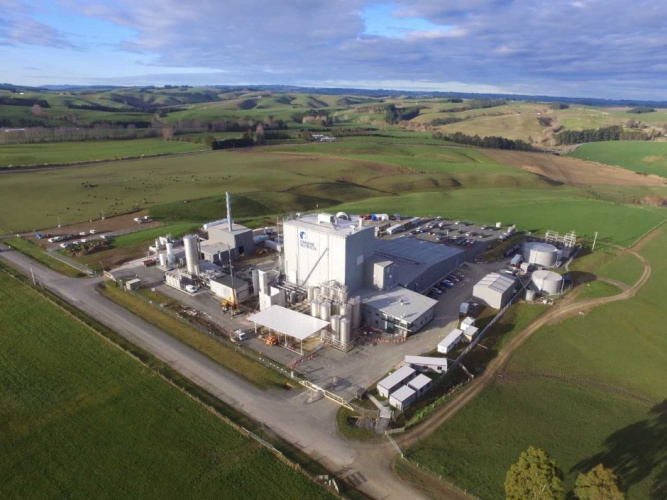
The €17.5m boiler, which is to be installed at the company’s Nutricia spray drying plant in Balclutha, on the country’s South Island, is the first stage of Danone’s plans to make the facility entirely carbon neutral by 2021.
The Balclutha plant processes raw milk sourced from 18 local farms into a powder that is used as the base for the production of its Infant Milk Formula (IMF) brands, including Aptamil and Karicare.
Finance agreement triggers world’s largest biomass power project
Spray drying plants convert milk into a dry powder using heat from a boiler. As a result, around 85 per cent of the plant’s energy consumption comes from steam production.
The new biomass facility will replace the gas or coal typically used as an energy source in boilers with sustainable, locally-sourced wood fuels, according to Cyril Marniquet, Danone’s New Zealand operations director.
‘Biomass’ is energy from plants or plant by-products, in which solar energy is captured and stored via the process of photosynthesis. When biomass is burned, it releases CO2 and other by-products, but this is largely offset by the CO2 which is absorbed in the growth of the plant.
“Danone’s biomass boiler at the Balclutha facility will be fuelled by by-products or residue of forestry activity that may ordinarily go to waste,” said Marniquet. “These lumber production by-products, while traditionally disposed of or burned, are valuable sources of heat, steam, and electricity when used in a biomass boiler system.”
With four commercial forests within a 50km radius of the Balclutha plant, the facility will have a reliable source of biofuel, in addition to providing an economic benefit to the local forestry industry, Marniquet said.
“Danone will source fuel from local partners who participate in New Zealand’s Forest Stewardship Council (FSC) certification scheme, to ensure fuel is being sourced from sustainably managed forests,” he said. “Danone also plans to broaden its source of fuel to include urban wood waste.”
The boiler is due to be installed by the end of 2020 and will be commissioned in 2021. Resource management company Veolia will design and manage the construction of the biomass boiler.
Overall Danone will be investing approximately €25m in the Balclutha facility, which also includes the installation of a new water treatment plant to more efficiently treat water waste.
Danone also plans to switch to renewable sources of electricity at the plant by 2020, which it claims will cut the facility’s CO2 emissions by 96 per cent.
The remaining four per cent of CO2 emissions will be generated by the plant’s gas consumption at times when the biomass boiler is undergoing maintenance. The company is also working towards finding a renewable source of energy to cover these maintenance periods, which it hopes to complete by 2021.
The Balclutha facility will then be the first carbon neutral plant to serve New Zealand’s dairy industry, the company said.
The development is part of Danone’s “One Planet. One Health” vision, in which it aims to become completely carbon neutral by 2050.




Red Bull makes hydrogen fuel cell play with AVL
Formula 1 is an anachronistic anomaly where its only cutting edge is in engine development. The rules prohibit any real innovation and there would be...